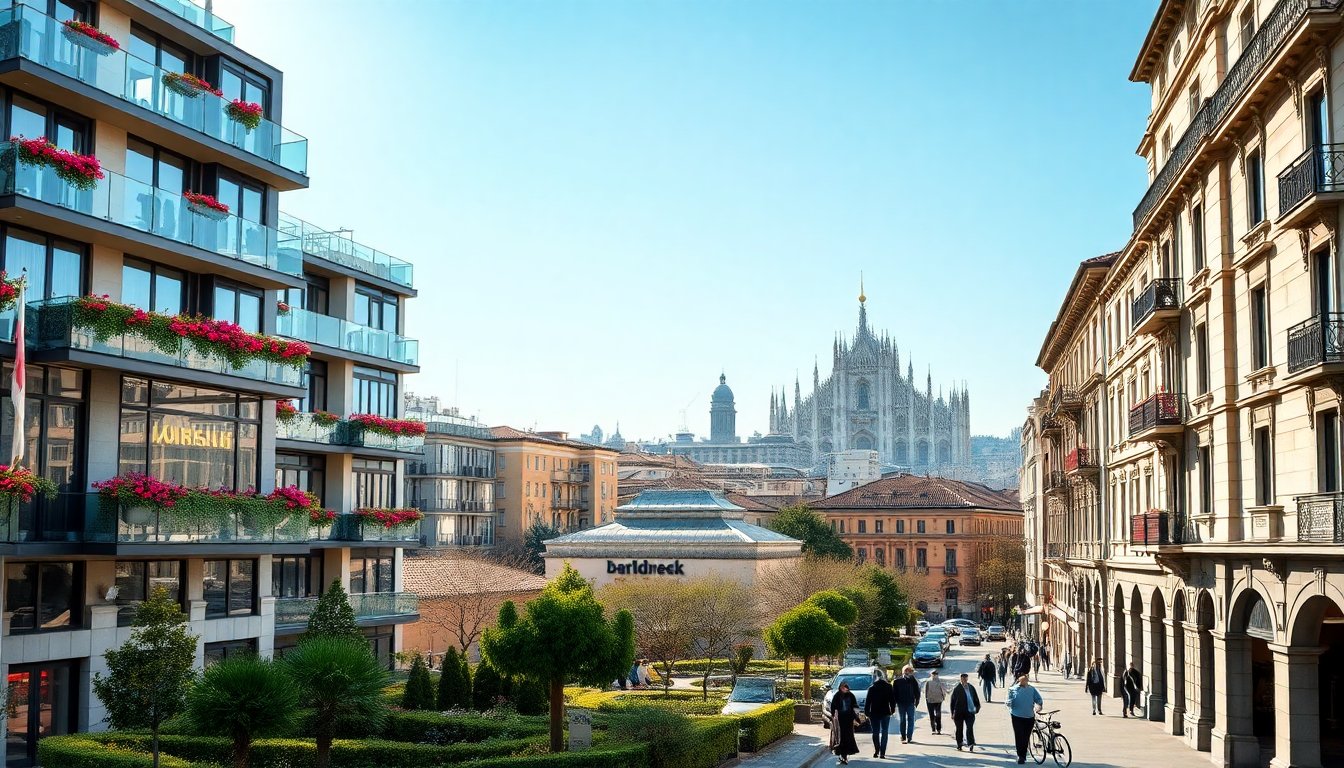Table of Contents
The Luxury Real Estate Market in Milan: An Overview
The luxury real estate market in Milan remains a prime destination for investors seeking lucrative opportunities. With over 20 years of experience in this sector, I have observed the market’s fluctuations, including peaks during economic growth and subsequent corrections during downturns.
The principle of location, location, location is more pertinent than ever. As Milan’s dynamics evolve, understanding these changes is essential for anyone aiming to navigate this complex landscape.
Market Overview with OMI/Nomisma Data
Recent data from OMI and Nomisma reveal that the luxury real estate market in Milan demonstrates resilience amid global uncertainties. Sales figures remain robust, particularly in prime districts such as the Quadrilatero della Moda and Brera. The latest reports highlight an average price increase of approximately 5% year-on-year for luxury properties.
Additionally, demand for high-end rentals has surged, especially in neighborhoods blending cultural heritage with modern amenities. Investors are increasingly focused on properties that promise competitive returns while appealing to affluent tenants. This trend has led to heightened interest in newly renovated apartments within historic buildings, where the charm of Milanese architecture harmonizes with contemporary living standards.
Analysis of Prominent Areas and Property Types
In the competitive Milan real estate market, certain neighborhoods are emerging as particularly attractive for investors. The Brera district, renowned for its artistic ambiance, has gained popularity among international buyers. With its array of galleries, upscale restaurants, and exclusive boutiques, this area has become a prime target for luxury investments.
Another noteworthy location is CityLife, where contemporary residential developments are setting new standards for urban living. The emphasis on architectural innovation and sustainability in this district aligns with the values of modern investors. Properties in CityLife not only offer promising rental yields but also show significant potential for capital appreciation.
Moreover, the increasing prevalence of coworking spaces and lifestyle hubs is shaping buyer preferences. Properties designed to accommodate home offices or located near business districts are in higher demand, reflecting evolving trends in how individuals balance work and personal life.
Price Trends and Investment Opportunities
Price trends in Milan’s luxury real estate market present strategic opportunities for investors. While certain areas may have reached their peak prices, others are still emerging, creating potential for growth. Notably, neighborhoods such as Porta Romana and Navigli are undergoing revitalization efforts likely to increase property values.
When evaluating potential acquisitions, investors should prioritize cash flow. Properties that generate a consistent income stream through rentals can help mitigate initial investment costs and provide stability against market fluctuations. Understanding the cap rate of a property is crucial; it is a key metric for assessing the profitability of an investment.
Practical Advice for Buyers and Investors
For those looking to enter the Milanese luxury market, thorough research is essential. Engaging with local real estate experts who possess intimate knowledge of market dynamics can provide invaluable insights. Prospective buyers should be prepared to act swiftly when a desirable property becomes available, as competition is often intense.
It is also prudent to consider the long-term implications of any purchase. Properties in prime locations not only offer immediate benefits but also serve to strengthen a robust investment portfolio capable of withstanding economic downturns. In real estate, the principle that ‘the brick remains’ holds true—properties typically appreciate over time, making them a reliable investment.
Medium-Term Forecasts
The outlook for Milan’s luxury real estate market is promising. The city continues to attract international talent and investment, driving demand for high-end properties. Furthermore, ongoing urban development initiatives aimed at improving the city’s infrastructure are expected to enhance property values.
In conclusion, while challenges exist in Milan’s luxury real estate market, there are also considerable opportunities for savvy investors. By prioritizing location, comprehending market trends, and making informed decisions, investors can navigate this sector with confidence.


